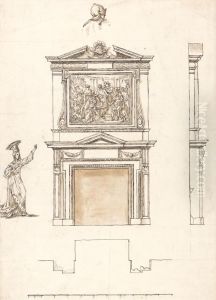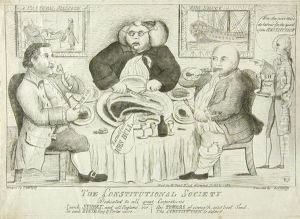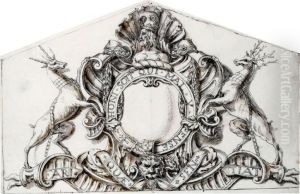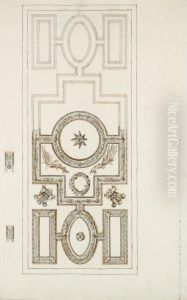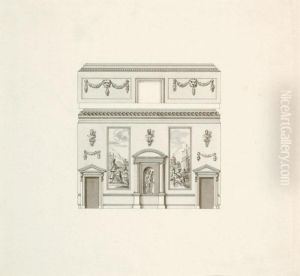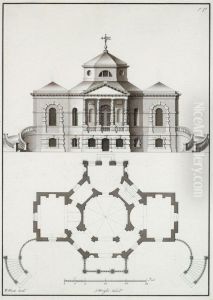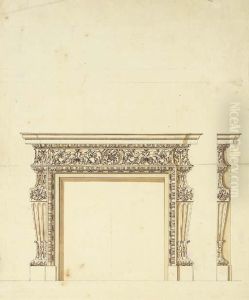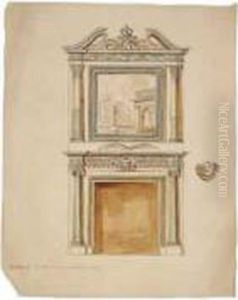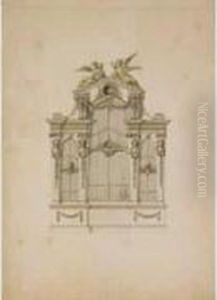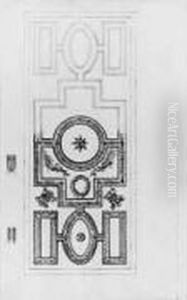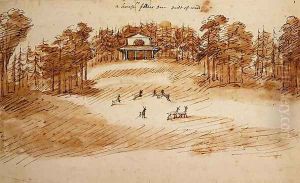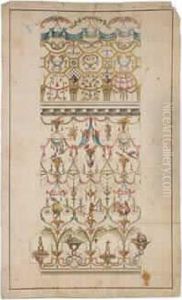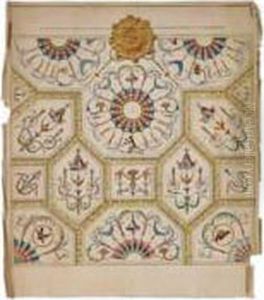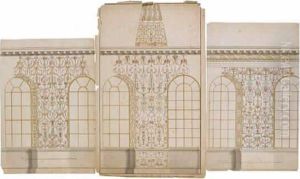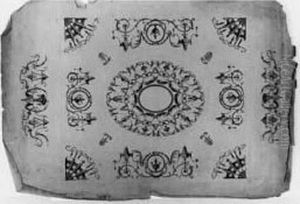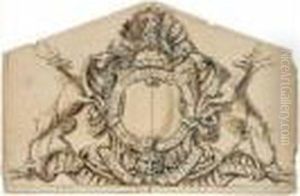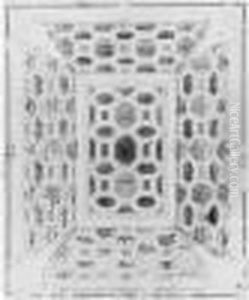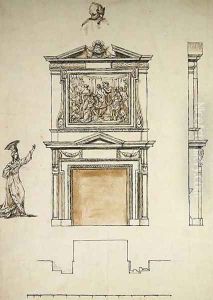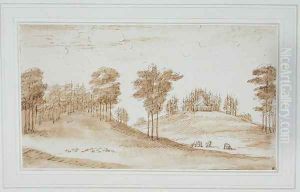William Kent Paintings
William Kent was an eminent English architect, landscape architect, and furniture designer of the early 18th century. He was born in Bridlington, East Yorkshire, around 1685 and was apprenticed to a coach painter early in his life. His talents were evident, and with the patronage of several Yorkshire gentlemen, he was able to travel to Italy in 1709 to further his studies. He remained in Italy until 1719, where he was influenced by the works of Andrea Palladio and the Baroque art of Rome, and developed a passion for painting, architecture, and the antique.
Upon his return to England, Kent began to work under the patronage of the influential Richard Boyle, 3rd Earl of Burlington, who was a leading figure in the Palladian movement in England. Kent's collaboration with Lord Burlington propelled him to the forefront of architectural design. He became a key proponent of the Palladian style in England, promoting classical architectural designs based on the principles of the ancient Roman architect Vitruvius, as interpreted by Palladio.
Kent's work extended beyond architecture, encompassing interior design, furniture, and garden design. He is credited with the introduction of the 'English landscape garden', a style characterized by naturalistic layouts with sweeping vistas and irregular features that mimic the countryside. This was a significant departure from the formal, geometric French style gardens that were prevalent in England prior to Kent's influence.
Some of Kent's most notable works include the remodelling of Burlington House, Chiswick House, and Holkham Hall, as well as the design of Stowe House gardens and Rousham House gardens. He also designed several pieces of furniture that are considered masterpieces of early Georgian design.
Kent's influence was profound and long-lasting. He played a major role in shaping the aesthetic tastes of the English aristocracy in the early 18th century, and his contributions to architecture and garden design continue to be celebrated. He was a key figure in the development of a uniquely English style of art and design that combined classical elements with a new sense of national identity. William Kent died on April 12, 1748, in London, and his legacy is remembered as one of innovation and elegance in the Georgian era.


